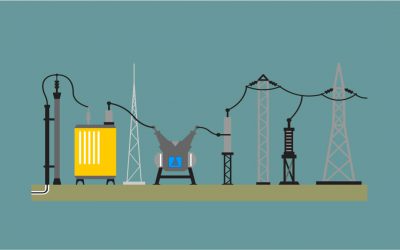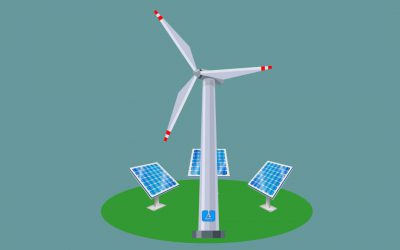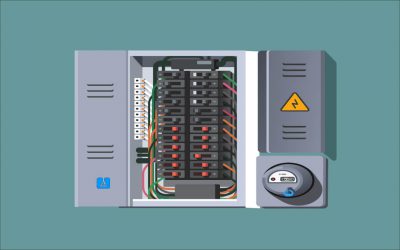We supply integrated electronics training lab system consists of many training breadboard station covers teaching various electronics topics such as DC and AC fundamentals, digital signal processor, semiconductor devices, transistor amplifier circuits, transistor power amplifiers, transistor feedback circuits, power supply regulation circuits, FET fundamentals, thyristors and power control circuits, operational amplifier applications, digital logic fundamentals, digital circuit fundamentals, motors, generators and controls, power transistors and GTO thyristor, 32-bit microprocessor, and microcontroller system development.
We can supply individual breadboard station or as a complete system.
The complete training lab system enables students to apply various experiments and activities in electronics covers the following topics:
Basic AC/ DC
- Basic concepts of electrical circuits, both in direct current (dc) and alternating current (ac)
- Ohm’s law
- Kirchhoff’s voltage and current laws
- Using measuring instruments (voltmeters, ammeters, ohmmeters, etc.)
- Solving series and parallel circuits
- Electromagnetism
- Electrical distribution
- Troubleshooting electrical circuits
- Exploration of the most common electrical components: power sources, resistors, inductors, capacitors, transformers, switches, relays, motors
DC Fundamentals
- Symbols and Schematics
- Basic and Electrical Safety Rules
- Circuit Voltage, Current, Resistance
- DC Power Sources in Series and in Parallel Series
- Opposing DC Sources
- Switches Identification and Switching Concepts
- Ohm’s Law: Circuit Resistance, Current, & Voltage
- Resistance, Voltage, and Current in a Series Resistive Circuit
- Resistance, Voltage, and Current in a Parallel Resistive Circuit
- Resistance, Voltage, and Current in a Series-Parallel Resistive Circuit
- Power in a Series and/or Parallel Resistive Circuit
- Rheostat and Potentiometer
- Voltage and/or Current Dividers
- Measuring: DC Ammeter, DC Ohmmeter, DC Voltmeter
- Troubleshooting DC Circuits
DC Network Theorems
- Component Location and Identification
- Circuit Board Operation
- Currents and Node Currents in a Two-Element Branch Circuit
- Voltages in a Three-Element Series Circuit
- Algebraic Sum of Voltages in a Series Circuit
- Generating Loop Equations and Node Equations
- Kirchhoff’s Voltage and Current Laws with a Two-Source Circuit
- Mesh Solutions, Superposition Solution and Millman’s Theorem Solution of a Two-Source Circuit
- Thevenizing a Single-Source Network and a Dual-Source Network
- Thevenin Resistance (RTH) and Voltage (VTH) of a Bridge Circuit
- Thevenin-to-Norton Conversion
- Norton-to-Thevenin Conversion
- Tee and Wye or Pi and Delta Networks
- Transformation of Delta and Wye Networks
- Troubleshooting Basics and DC Networks
AC Fundamentals
- Magnetism and how to make a Magnet
- The Oscilloscope
- Laboratory Instruments: Oscilloscope, AC Waveform Generator, AC Amplitude Measurements
- Measuring AC Voltage, Current and Impedance
- Measuring and Setting Frequency
- Inductors, Phase Angle, Series vs Parallel, Inductive Reactance, and Impedance
- Series and Parallel RL Circuits
- Electromagnets, Solenoid, Relay
- Transformer Windings, Mutual Inductance, Turns and Voltage Ratios, Secondary Loading
- Capacitors, Series vs Parallel, Capacitive Reactance
- Series and Parallel RC Circuits
- RC Time Constants
- RC/RL Waveshapes
- Series and Parallel RLC Circuits
- Series Resonant Circuits
- Q and Bandwidth of a Series/Parallel RLC Circuit
- Resonant Frequency in a Parallel RLC Circuit
- Power Division and Power Factor
- Filters: Low-Pass, High Pass, Band-Pass and Band-Stop
- Troubleshooting the AC Fundamentals Circuit Board
Semiconductor Devices
- Semiconductor Component Identification and Control of a Semiconductor Switch
- Diode: DC Characteristics, Diode Waveshaping
- Rectifiers: Half-Wave, Full-Wave Diode Bridge, Power Supply Filtering, Voltage Doubler
- Zener Diode and Voltage Regulation
- Transistor: Testing the Junctions, PNP Transistor Current Control Circuit, Emitter-Base Bias Potentials, Collector Current vs Base Bias, DC Circuit Voltages, Load Lines
- Troubleshooting Basics and Troubleshooting the Semiconductor Devices Circuit Board
Transistor Amplifier Circuits
- Circuit Location and Identification
- Multistage Amplifier Introduction
- Common Base, Common Emitter, and Common Collector Circuits AC/DC Operation
- Temperature Effect on Fixed Bias Circuit and Voltage Divider Bias Circuit
- Transistor Parameters Familiarization and Understanding the Specification Sheet
- RC Coupled Amplifier DC Operation, AC Voltage Gain and Phase Relationship, Frequency Response
- Transformer Coupled Amplifier AC/DC Operation, Frequency Response
- Direct Coupled Amplifier AC/DC Operation, Frequency Response
- Troubleshooting Basics and Troubleshooting Transistor Amplifier Circuits
Transistor Power Amplifiers
- Circuit Location and Identification
- Single-Ended Power Amplifiers: Introduction, DC Operation, AC Operation, Voltage Gain, Power Gain
- Phase Splitter DC Operation
- Voltage Gain and Input/Output Signal Phase Relationship
- Push-Pull Power Amplifiers: DC Operation, AC Operation, Voltage and Power Gain
- Complementary Power Amplifiers: DC Operation, AC Operation, Voltage Gain and Power Gain
- Darlington Pair Current Gain Characteristics, Input and Output Impedance
- Troubleshooting Basics and Troubleshooting Transistor Power Amplifiers
Transistor Feedback Circuits
- Component Location and Identification
- Series Feedback Amplifier Operation
- Exploration of the Following Effects: Feedback on AC Gain, Negative Series Feedback on Bandwidth, Series Feedback on Input and Output Impedance, Shunt Feedback on AC Gain, Bandwidth and Input and Output Impedance
- Shunt-Series Multistage Amplifier Current Gain, Output Gain, Voltage Gain, Output Impedance
- Differential Amplifier Operation
- Single-Ended and Differential Gain Characteristics
- Common Mode Gain and Rejection Ratio
- Troubleshooting Basics and Troubleshooting Feedback Amplifier Circuits
Power Supply Regulation Circuits
- Circuit Location and Identification and Power Supply Regulator Introduction
- Shunt and Series Regulators Operation, Line and Load Regulation
- Voltage Feedback Regulator Operation, Load Regulation
- Foldback Current Limiting Active Protection Circuit
- Current Regulator Operation, Line and Load Regulation
- Three-Pin IC Regulator Operation, Voltage Regulation, Current Regulation and Power Efficiency
- DC to DC Converter Operating Characteristics, Voltage Regulation, and Efficiency
- Troubleshooting Basics and Troubleshooting Power Supply Regulation Circuit
FET Fundamentals
- Component Location and Identification
- Oscillators Operation: Unijunction, Hartley, Colpitts
- JFET: Operating Characteristics, Effect of Gate Bias on Pinch-Off, Dynamic Characteristics, DC Amplifier Operation, Voltage Gain, DC Current Source Operation and Power/Load Voltage Variation
- MOSFET: Zero Bias Characteristic, Modes of Operation, Voltage Amplifier, Dual Gate MOSFET Mixer
- UJT: Operating Characteristics, Waveform Generation
- Thermistor and Photoresistor Operation
- Fiber Optic Light Transfer
- Troubleshooting Basics and Troubleshooting FET Circuits
- Understanding Specification Sheets: FET, Unijunction Transistor, Transduce
Thyristors and Power Control Circuits
- Thyristor: Component Familiarization, Circuit Fundamentals
- Silicon Controlled Rectifier (SCR): Testing, DC Operation, Gate Trigger Voltage and Holding Current
- Rectifiers: Half-Wave Rectifier, SCR Controlled Half-Wave Rectifier, Full-Wave Rectifier, Phase Control
- UJT: Characteristics, Half and Full-Wave Phase Control
- Bidirectional Conduction, Triggering Modes (4)
- Troubleshooting Basics and Troubleshooting Thyristor Circuit
Operational Amplifier Fundamentals
- Op Amp Types and Packages, Circuit Board Familiarization, Basic Op Amp Characteristics and Parameters
- Inverting and Non-Inverting Amplifiers Operation: DC and AC
- Voltage Follower DC Operation, AC Operation
- Typical Amplifiers Operation: Inverting Gain-of-One Amplifier, Inverting Summing Amplifier, Scaling, Averaging, Non-Inverting Summing, Difference Amplifier (AC/DC)
- Open-Loop Operation, Zener-Clamped Operation
- Sine Wave to Square Wave Converter
- Troubleshooting Basics and Troubleshooting Op-Amp Circuits
Operational Amplifier Applications
- Component Location and Identification
- Band Pass Filter Operation
- Integrator and Differentiator
- Low Pass and High Pass Filter Frequency Response, Phase and Transient Response
- Band Pass Filter Operator, Frequency Response, Phase Response
- DC Characteristics of an Active Voltage to Current Converter
- AC Characteristics of an Active RMS or Average Calibrated Voltage to Current Converter
- Troubleshooting Basics and Troubleshooting Op-Amp Circuits
- Troubleshooting Op Amp Circuit
Digital Logic Fundamentals
- Component Location and Identification
- Operation of General Circuits and IC Package Fundamentals
- Logic Functions: AND, NAND, OR, NOR, Exclusive OR, NOR Gates
- Dynamic Response of XOR/XNOR Logic Gates
- DC Operation of a NOT and an OR-TIE
- Transfer Characteristics of a Schmitt and a Standard LS TTL Gate
- Flip-Flops: Set/Reset, D-Type, Static JK, Dynamic Operation
- Tri-State Gate: Output Enable Control, Sink and Source Control
- TTL and CMOS: Static Trigger Levels, Dynamic Transfer Characteristics
- Static and Dynamic Control of a Data Bus
- Troubleshooting Basics and Troubleshooting Digital Circuits
Digital Circuit Fundamentals
- Operation of General Circuits and IC Package Fundamentals
- Basic Counter Control Functions, Ripple Counter Waveforms, Synchronous Counter Circuit Waveforms and Glue Logic
- Basic Operating Modes of the Shift Register
- Shift Register Circuit Waveforms
- Fundamental Binary Addition, Addition with Input and Output Carry
- Fundamental Binary Comparisons
- Comparators and Counter Modulus Control
- Fundamentals: BCD Decoder Operation, Priority Encoder Operation, ADC Operation, DAC Operation
- Data Selector, Multiplexer, 1-Line-to-8-Line Demultiplexer
- 1-Line-to-8-Line Demultiplexer
- LED Decoder/Driver, 7-Segment LED Display, ODD, and EVEN Parity
- ODD and EVEN Parity
- Parity Generator/Checker Glue Logic
- Troubleshooting MSI IC Circuits and Digital Circuits
Microprocessor
- Introduction to the Circuit Board and its Operation
- Bus States, 32-Bit Bus Transfers
- Read and Write Cycles
- CPU Initialization
- Memory Control Signals, Address Decoding, Data Transfers
- Ports: DAC and ADC Ports, PPI and Keypad Interface, Display and Serial Ports
- Non-maskable and Maskable Interrupts, Exceptions
- Immediate, Register and Memory Addressing Modes
- Instruction Formats and Using the 80386 CPU Instructions
- Troubleshooting Basics and 32-Bit Microprocessor Troubleshooting
- Application Board Familiarization (Requires the Optional Microprocessor Application
Transducer Fundamentals
- Introduction to Transducers and the Circuit Board
- Temperature Measurement, Control, RTD, Thermocouple
- Capacitance Sensor, Touch and Position Sensing
- Strain Gauge Characteristics
- Bending Beam Load Cell (Strain Gauge)
- Ultrasonic Principles, Distance Measurement
- Infrared Transmission/Reception, IR Remote Control
- Force Measurement
Motors, Generators and Controls
- DC Motor Circuits Familiarization
- Stepper Motor and AC Motor Circuits
- Analog DC Motor Positioning, PWM DC Motor Positioning
- Analog and Pulsed Speed Control of a DC Motor
- Variable Frequency Control
- The Tachometer Generator
- Troubleshooting
Power Transistors and GTO Thyristor
- Power Transistors and GTO Thyristor Identification
- Familiarization with the Driver Circuit Block and Load Circuit Block
- Basic Operations of Power Bipolar Transistors, Power MOSFETs and IGBTs, GTO Thyristors
- Switching Time and Conduction Voltage Drop
- Switching Power in an Inductive Load, Free-Wheeling Diode Recovery Time
- Losses in Electronic Power Switches
- Components: Bipolar Power Transistor, Darlington Power Transistor, GTO Thyristor, Power MOSFET, IGBT, Ultra-Fast IGBT
- Inputs and Outputs, Digital vs Analog, Clocking
- 16F877A Architecture, Memory
- Programming, Display a Message, Calculations, Input Conditioning, Decisions and Macros
- The 7-Segment Display
- String Variables and ASCII Code
.jpg)


